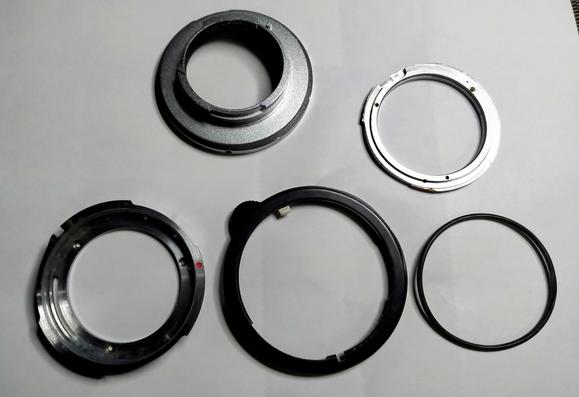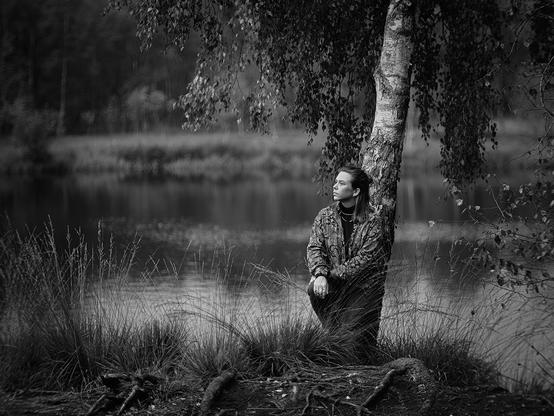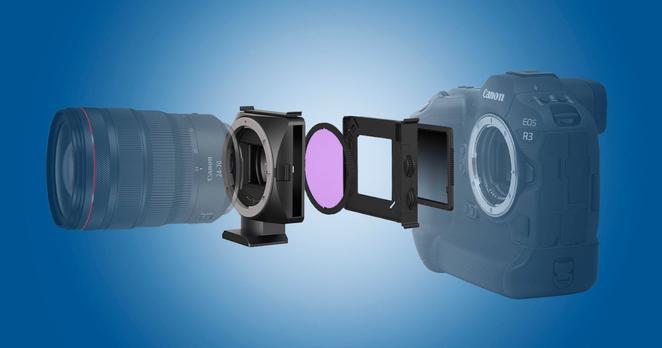I Took 35mm Film Photos With an Anamorphic Lens: Was It Worth It? https://petapixel.com/2025/04/19/i-took-35mm-film-photos-with-an-anamorphic-lens-was-it-worth-it/ #voigtlanderbessar2a #panoramicphoto #panoramicfilm #lensadapter #anamorphic #panoramic #ultrawide #Features #35mmfilm #bessar2a #adapted #feature #Analog #analog #film
#lensadapter
You Can Create an Affordable and Wacky Portrait Prime Using Vintage Projector Lenses https://petapixel.com/2025/02/28/you-can-create-an-affordable-and-wacky-portrait-prime-using-vintage-projector-lenses/ #projectorlens #DoItYourself #doityourself #jameswarner #lensadapter #snappiness #Spotlight #adapter #DIY
New Voigtlander Color-Skopar 35mm f/3.5 VM Lens Is Ridiculously Small https://petapixel.com/2025/02/14/new-voigtlander-color-skopar-35mm-f-3-5-vm-lens-is-ridiculously-small/ #voigtlandercolorskopar35mmf35 #cosinavoigtlander #rangefinderlens #lensadapter #rangefinder #voigtlander #mmountlens #Equipment #35mmlens #Analog #cosina #vmlens #News
There's an #STL for that. #LensAdapter
Nikkor 50mm f/1.4 AI-s Retro Review: A Brilliant Gateway into Vintage Glass https://petapixel.com/2024/07/12/nikkor-50mm-f-1-4-ai-s-retro-review-a-brilliant-gateway-into-vintage-glass/ #vintageglass #gordonlaing #lensadapter #nikonfmount #retroreview #vintagelens #cameralabs #nikkor50mm #Equipment #Spotlight #50mmlens #vintage #Analog #nikon #News
Using Konica AR lenses on my Canon EOS 1000D
The other day I found a Konica to EOS Adapter on eBay. I’ve wanted one of these for a while but wasn’t able to find one – either new or used, so I jumped on this one and contacted the seller. After a bit of bartering we agreed on 25 euro + shipping costs and he sent it out the same day!
Today it arrived and I immediately put it on my Canon, […]
Unlike the screws on the camera mount (m1.7), the screws on the adapter proved to be M1.4 x 3mm - at least that matches the holes and the length of the remaining screw. Original would have been JIS cross point, but could only find recessed philips heads.
After partially disassembling the lens, I was able to free the adapter. No wonder it was wobbly, it was held together with only one of 3 screws. And, I doubt this is original, but there was a o-ring in the sandwich of parts making up the adapter. My guess is that the o-ring was added to compensate for the 2 missing screws, leaving a path for light to enter without it.
The aperture stop spring and bearing was also missing.
#photography #camera #lens #lensadapter #topcon #topcor #exakta
Der kleine Hinweis zum #Fotomontag: Nicht jedes #Projektionsobjektiv muss Swirlen bis der Arzt kommt ...
Johanna, Felm 2023
#Fujifilm #GFX50R & OKP 100/1.8 Projection Lens
#Fotografie #Photography #Portraitfotografie #Portraitphotography #GFX #Kiel #ProjectionLens #AdaptedLens #Lensadapter #Altglas #Swirl #PhotoMonday
Converting A Sigma Lens To Canon, Digital Functionality Included https://hackaday.com/2022/07/01/converting-a-sigma-lens-to-canon-digital-functionality-included/ #digitalcamerashacks #canonefmount #lensadapter #efmount #camera #canon #sigma #dslr #lens
Benro Unveils Aureole, the ‘First’ Detachable Multi-Filter Lens Adapter
Benro has announced the Aureole, what it calls the first detachable, multi-function filter adapter system that allows photographers to not only adapt lenses but also supports filters via a built-in quick loading system.
The Benro Aureole (aureole means "circle of light or brightness surrounding something," such as would be depicted around the heads of holy figures in art) comes in two configurations: Canon EF lenses to RF cameras (the RC1) and Canon EF lenses to Sony E-Mount bodies (the RE1). Benro says that the benefit to the system, in addition to acting as a lens mount adapter, is the ability to also use filters without needing to attach anything to the front of the lens.
Beyond that, Benro says that it has created a smarter filter system. Rear-mounted filters have the benefit of being smaller and allow them to work with any lens, but the process of removing them can be tedious. Front-mounted filters are more common and more widely used, but tend to be much larger and multiple sizes or ring adapters are necessary to work with lenses of different sizes.
The concept for the Aureole, which combines the two concepts into what Benro calls the best of both worlds, isn't new, as Canon -- for example -- already produces an adapter for Canon EF to RF that includes the ability to mount filters within it. Benro actually compares its Aureole against five other options from the likes of Aurora, Fotodiox, Kipon, and Deo-tech, but says its design combines the best aspects of each into a better finished product.
Benro seems to be leaning on the "first" in its claims because it allows for the use of Canon EF lenses on Sony E-Mount cameras, making it a lens adapter that works across camera brands that is also a filter holder. Benro says the design of the Aureole reduces the cost of adapters and filters at the same time.
The filter system is also more advanced than any of its noted competitors since it can take two different filters at the same time. Benro calls it a "double filter" system that can accept both square and circular format filters simultaneously (either a circular and a circular or a square and circular). Circular filters can be used with variable neutral density (ND) or circular polarizers while the square format can act as a graduated filter. The adapter allows one filter to be inserted from the top and another from the side interchangeably, and Benro indicates that this makes it more versatile for both portrait or landscape camera orientations, and leaving one filter in place while swapping the other helps keep a camera's sensor clear of dust.
The Benro Aureole will be available for $249, but will be offered at launch at a discounted $180 for an undisclosed amount of time. The company did not specify the price of any of the filters at the time of the announcement.
#equipment #news #adapter #aureole #benro #benroaureole #canonef #canonrf #filteradapter #filters #lensadapter #sonye
Viltrox’s New EF-to-E Lens Adapter Has a Helpful OLED Display
The Chinese camera equipment company Viltrox has launched a new Mark V Canon EF/EF-S to Sony E lens mount adapter with a unique design and a host of handy features.
The new adapter is the 5th model of Viltrox Canon to Sony adapters in a series that goes back to the original adapter that made Canon EF lenses usable on Sony NEX cameras. Viltrox says its latest version is the result of 9 years of continuous development since the Mark I version.
A Built-In OLED Screen
The new adapter (first spotted by DPReview) features a built-in OLED display that allows the user to easily see current settings, including focal length, aperture, and focus mode.
The adapter supports both phase-detection and contrast-detection autofocus, and the mode will be indicated by either a P or a C (respectively) on the adapter screen. The focus mode is selected using a dial to the right of the screen.
There's also manual aperture control through the adapter that can be controlled with the + and - buttons on the side to the left of the screen. Holding the + button down brings the adapter into and out of manual aperture mode, and pressing the + and - buttons allows the aperture value to be adjusted while in manual mode.
Holding down the - button causes the adapter to enter object distance display mode, showing the distance of what the camera is pointed at.
Adapter Upgrades Through USB
Inside the front mount of the adapter is a Micro USB port that is used to perform firmware updates. Viltrox says that updates will allow the adapter to be upgraded to be compatible with future cameras and lenses on the market.
Features and Specs of the Adapter
In addition to supporting basic autofocus, the adapter also plays nicely with Eye AF features in Sony cameras for tracking moving subjects' eyes in real-time.
Other features and specs include metal electronic contacts, support for EXIF data, camera exposure adjustments, a standard 1/4″ tripod mount socket, support for Canon IS lens stabilization, a weight of 5.57oz (~156g), and a length of 1.44 inches (36.5mm).
Pricing and Availability
The Viltrox Mark V EF-to-E lens mount adapter is available now for $199 through the Viltrox online store.
#equipment #news #adapter #canonef #canoneftosonye #eftoe #launch #lensadapter #sonye #viltrox
Printed Adapter Puts Vintage Lens Back to Work
While browsing through an antiques shop, [Nick Morganti] came across a Kodak slide projector with an absolutely massive lens hanging off the front. Nearly a foot long and with a front diameter of approximately four inches, the German-made ISCO optic was a steal for just $10. The only tricky part was figuring out how to use it on a modern DSLR camera.
After liberating the lens from the projector, [Nick] noted the rear seemed to be nearly the same diameter as the threaded M42 mount that was popular with older film cameras. As luck would have it, he already had an adapter that let him use an old Soviet M42 lens on his camera. The thread pitch didn't match at all, but by holding the lens up to the adapter he was able to experiment a bit with the focus and take some test shots.
Encouraged by these early tests, [Nick] went about designing a 3D printed adapter. His first attempt was little more than a pair of concentric cylinders, and was focused like an old handheld spyglass. This worked, but it was quite finicky to use with the already ungainly lens. His second attempt added internal threads to the mix, which allowed him to more easily control focus. After he was satisfied with the design, he glued a small ring over the adapter so the lens could no longer be unscrewed all the way and accidentally fall out.
To us, this project is a perfect application of desktop 3D printing.[Nick] was able to conceptualize a one-of-a-kind design, test it, iterate on it, and arrive on a finished product, all without having to leave the comfort of his own home. To say nothing of the complex design of the adapter, which would be exceedingly difficult to produce via traditional means. Perhaps some people's idea of a good time is trying to whittle a lens bayonet out of wood, but it certainly isn't ours.
So it's probably little surprise we've seen a number of similar projects over the years. From monstrous anamorphic adapters to upgraded optics for the Game Boy Camera, it seems there's a healthy overlap between the 3D printing and photography communities.
#classichacks #digitalcamerashacks #camera #lens #lensadapter #lensmount #printedthreads #threaded


